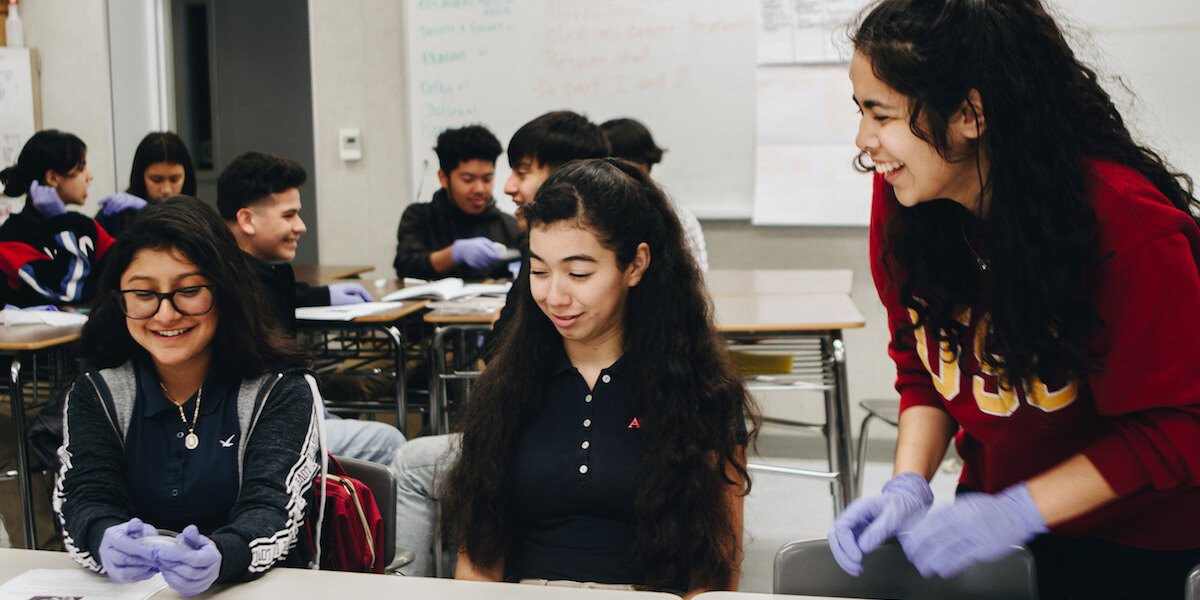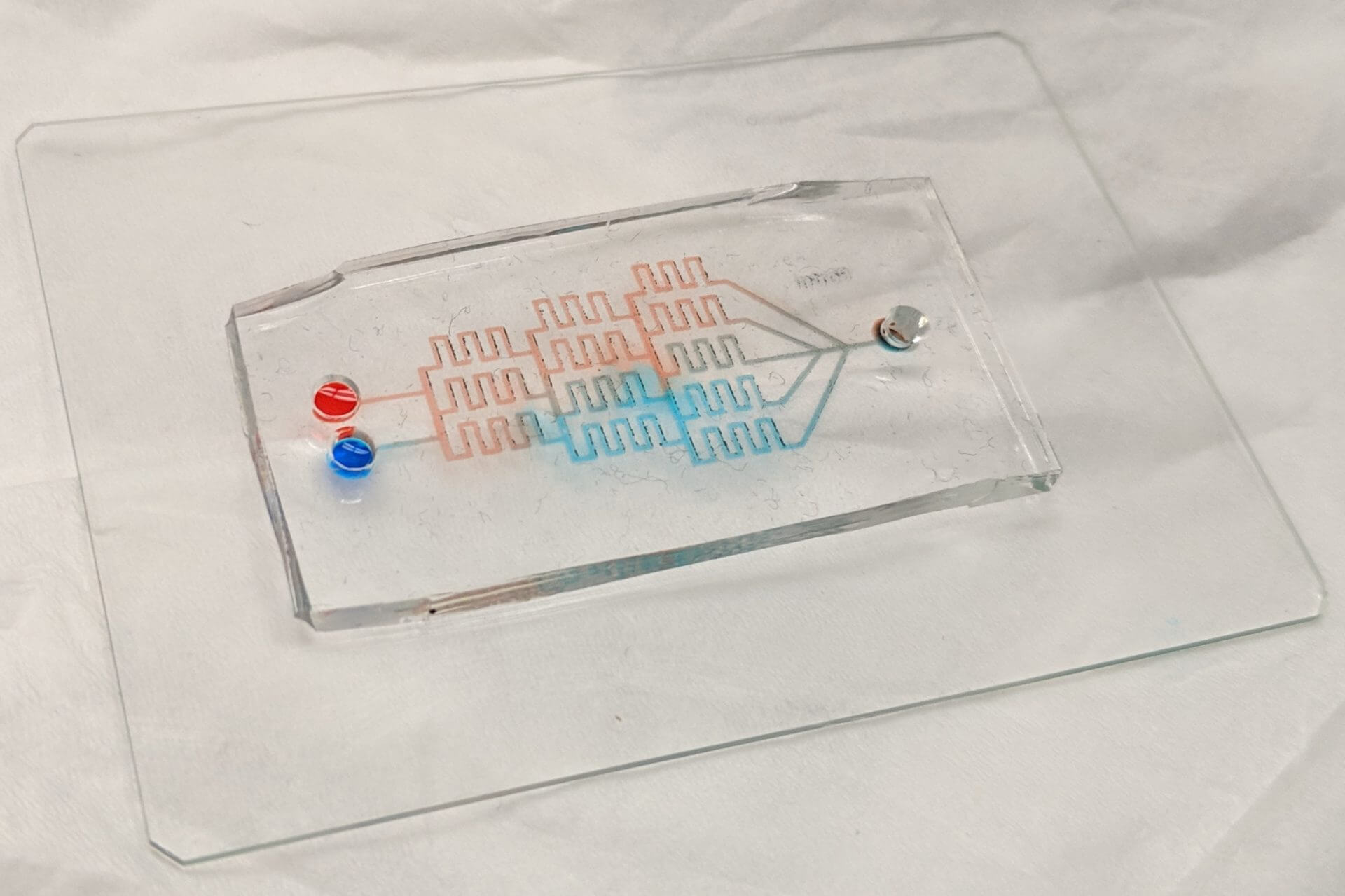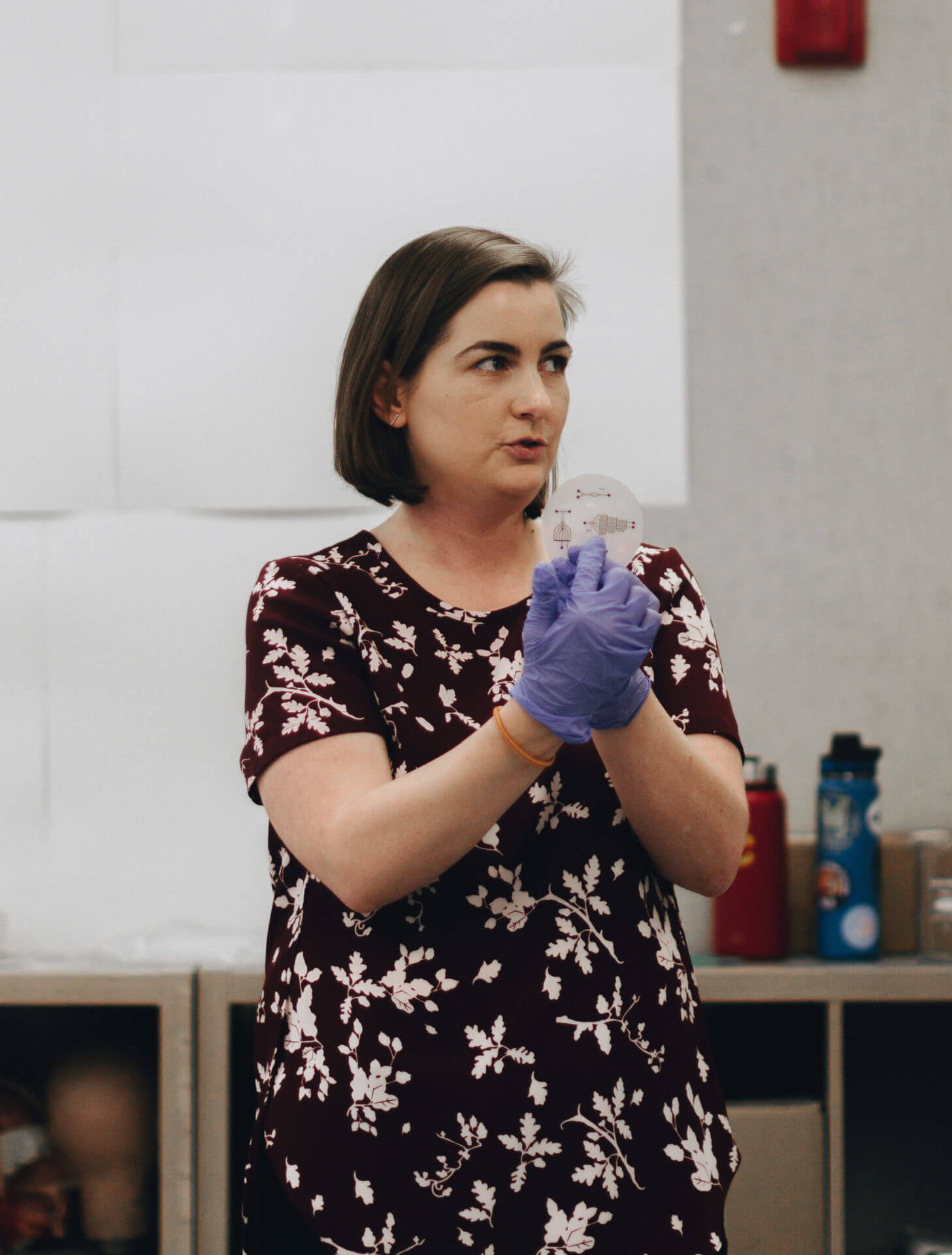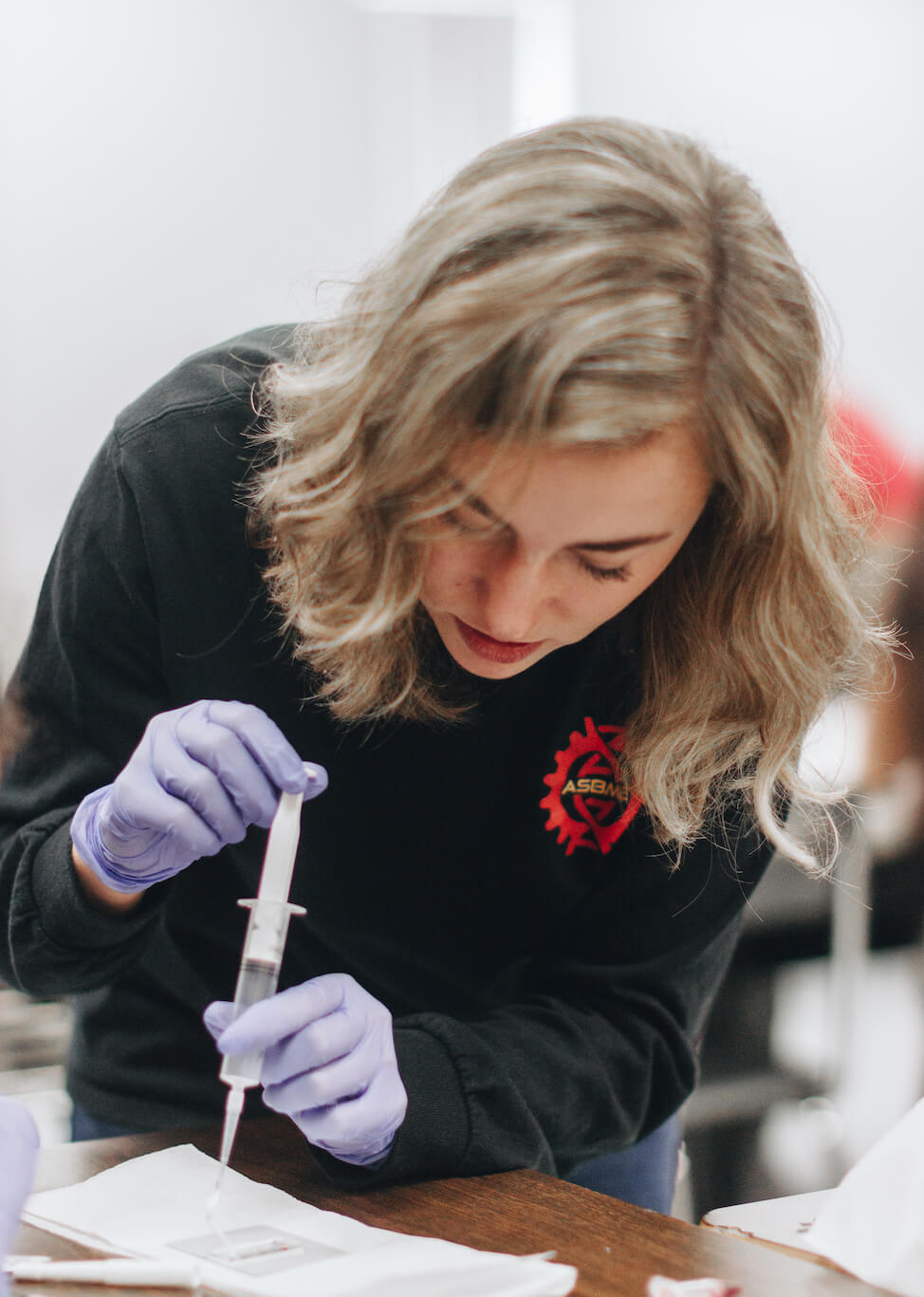
ASBME students worked with the 10th graders at Orthopaedic Medical Magnet High School to create microfluidic devices. (PHOTO/KAYLY LUONG)
The 10th grade CTE Biotech class at Orthopaedic Medical Magnet High School is buzzing in anticipation. They erupt into cheers. Bursting through the door is a team of USC students that is helping these sophomores craft their own fully-functioning medical devices, in a hands-on workshop showcasing the exciting possibilities of biomedical engineering.
Led by Chonette Early Career Chair and assistant professor of biomedical engineering, Megan McCain, the USC Associated Students of Biomedical Engineering (ASBME) group has been mentoring the class as they build working microfluidic devices.

A microfluidic chip after dyes have been injected into it. (PHOTO/MEGAN MCCAIN)
Microfluidics is the study of the behavior of tiny quantities of liquid. The liquids are mixed and examined on transparent chips, which feature millimeter-thin channels etched into materials like glass, silicon or polymer.
The class created their microfluidic chips using a process similar to that of popular retro toys, Shrinky Dinks, shrinkable plastic toys that become thicker when heated. Molds were formed using a large sheet of plastic that was printed with the designs of the channels that the students use to test the liquids. The plastic was then treated with a hot oil bath, causing it to shrink and the printed section to rise. The students then placed the raised section into the mold and filled the mold with Polydimethylsiloxane (PDMS)—a type of silicone—to create the channels they would then place on chips.
The students injected the channels with tiny drops of colored dyes, to examine how the different chip designs impact on how the dyes mix and change color.

L: The printed plastic forms a mold for the channels on the microfluidic chips. More complex channel patterns caused more variation in mixing of the colored dyes. R: The channels formed in the PDMS after being removed from the mold. (PHOTOS/KAYLY LUONG AND MEGAN MCCAIN)
The workshops are funded by a grant from the USC Good Neighbors Campaign, supporting local community projects and outreach from USC faculty and students. The project was developed thanks to a partnership with the Los Angeles Area Chamber of Commerce led by Brian Boyle, who is now working with Los Angeles Unified School District’s Linked Learning. Boyle facilitated the connection between USC Viterbi and Orthopaedic Medical Magnet High School and assisted with the securing of the Good Neighbors grant.
McCain said she had previously offered presentations to the school’s students once or twice a year. However the grant allowed her to go into more depth and raise students’ awareness of biotech career possibilities, with field trips to the USC campus and in-class workshops.
“The Good Neighbors grant gave us the opportunity to expand our partnership and get money for materials to be able to do an actual physical lab with the students,” McCain said.

Megan McCain explains the various channels on the microfluidic chips. (PHOTO/KAYLY LUONG)
She said that high school students often aren’t aware of biomedical engineering.
“In high school, I really liked science and math, but I didn’t want to pursue either in my career until I learned about biomedical engineering. Then I could see the application right away. I’m hoping that by the students seeing the exciting long-term cutting-edge applications of science and math, it’ll help keep them interested in learning the fundamentals,” McCain said.
McCain said that the lab exercise was exposing the students to technology that she actively uses in her own research around organ-on-a-chip platforms.
“These are small engineered human tissues that we can make measurements from for direct screening. One technology that’s really helpful for that is microfluidics because you can hook up different tissues from different patients, for example, and have fluid circulating through them or automated drug delivery to the tissue,” McCain said.
“This is kind of device fabrication that’s very relevant for the research we do, and it’s something that we can do at high school level,” she said.
McCain said that the Good Neighbors grant had enabled her to secure materials that could be used over multiple years, so she hoped that the school workshops could be an ongoing program.
ASBME President Luann Raposo said that the ASBME team has enjoyed the opportunity to mentor high school students thanks to the microfluidic device workshops.
“They have been really engaged from the very start of the project and worked with interest and patience.”
Raposo said that STEM outreach programs like the microfluidics project and the ASBME Project in a Box initiative, aimed at 3rd-6th grade students, provided unique opportunities for hands-on learning, experimentation and growth.

ASBME President Luann Raposo demonstrates how to inject colored dyes into the microfluidic chips. (PHOTO/KAYLY LUONG)
“By encouraging them to think differently about the societal implications of science and engineering, we also want to make it more accessible to choose STEM as a career path and open that opportunity to students who might not even consider this route.”
Raposo said it has been exciting for the ASBME student leaders to engage and make a positive impact on students in the local community.
“As students ourselves, it’s very rewarding to take on an active teaching role, honing the experiment and lesson plan to build the best experience for the class.”
Orthopaedic Medical Magnet High School has a curriculum focus for students interested in science and medicine. Physics teacher at the school, Dr. Monica Flores, said the class had been very engaged with the microfluidic device workshops.
“It’s interesting for me too, because I haven’t had the chance to do this before, so to learn that this is even possible is groundbreaking. Dr. McCain has been able to make that very tangible for the class,” Flores said.
Published on June 18th, 2019
Last updated on April 21st, 2025







